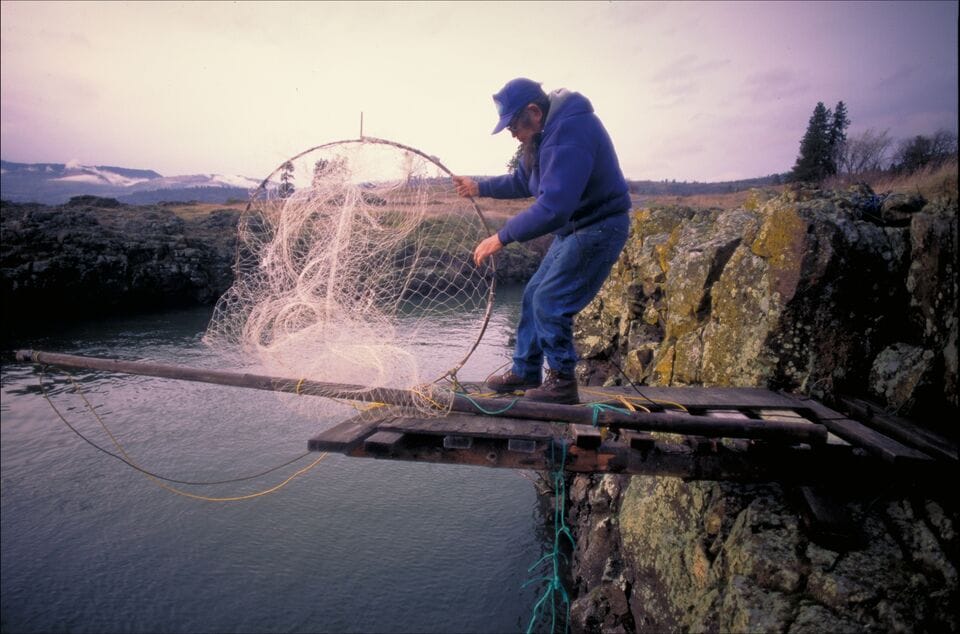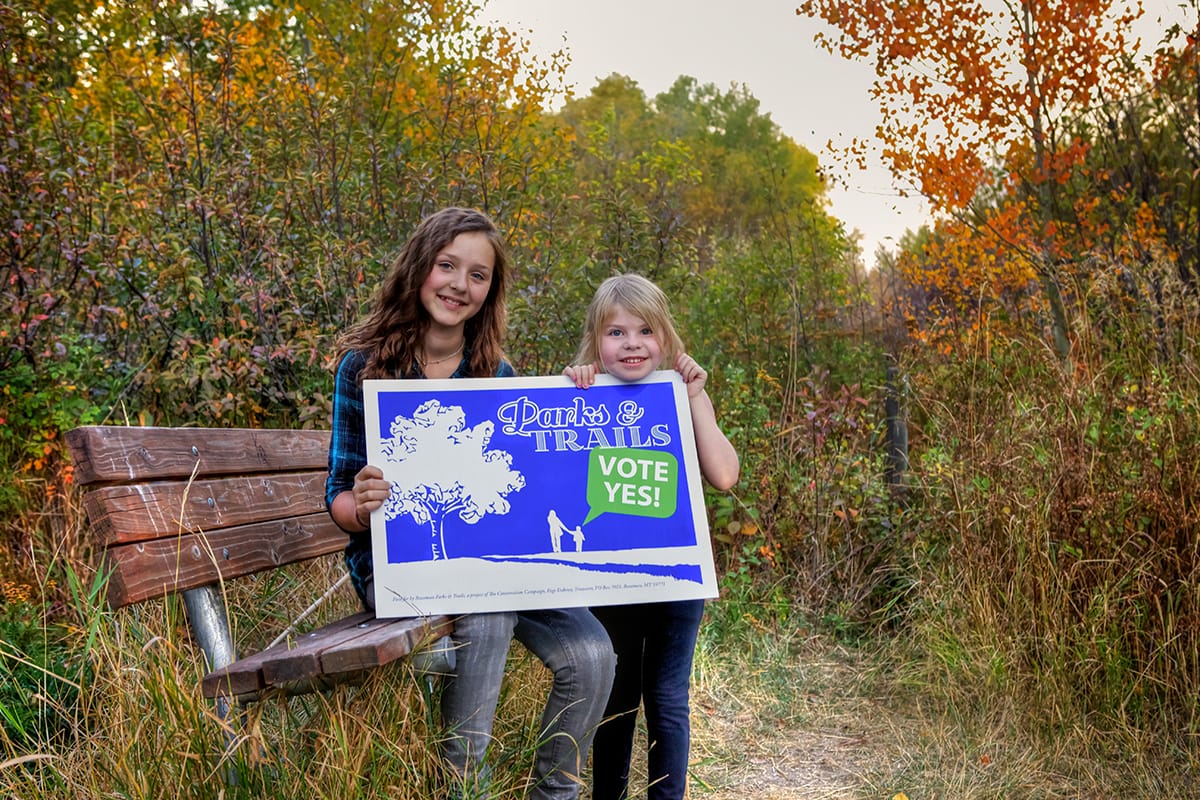
Remembering the one-woman force of nature behind the Columbia River Gorge National Scenic Area
Remembering the one-woman force of nature behind the Columbia River Gorge National Scenic Area
The Columbia River Gorge unwinds from the arid plateaus east of the Cascades to the towering temperate rainforests just outside of Portland, Oregon. It’s an 85-mile wonderland of thousand-foot cliffs, thundering waterfalls, vibrant wildflowers, and epic views up and down the vast river—and it’s accessible by hundreds of miles of public trail.
More than two million people visit the gorge each year: Today, it’s a beloved part of the Pacific Northwest’s outdoor identity. But 35 years ago, the gorge was at risk of being transformed by development from fast-growing Portland and nearby Vancouver, Washington. This Women’s History Month, we’re celebrating the one-woman force of nature who championed this incredible place, ensuring that the big views and beckoning trails she loved so much would remain accessible forever.
 611-foot Multnomah Falls is the tallest waterfall in the Columbia River Gorge.Photo credit: John Fowler
611-foot Multnomah Falls is the tallest waterfall in the Columbia River Gorge.Photo credit: John Fowler
Nancy Russell was an avid amateur botanist and a mother of five when she began prowling the wooded slopes of the gorge over 50 years ago, in search of wildflowers. In the 1970s, a proposed freeway bridge across the Columbia River north of Portland presaged swift development on the Washington side of the gorge, where development rules were more lax than in Oregon. Joining with others who loved the gorge, Nancy asked Oregon Senator Mark Hatfield for help. Hatfield told them that he’d push for special federal status if they could organize supporters from both sides of the river and both ends of the gorge to stand behind him.
As early as 1916 and from then on about every decade, Congress had considered one or another proposal to regulate growth and protect the gorge’s most important natural and recreational resources for the growing Northwest. But nothing stuck—until Russell came along. And while no one claims that she single-handedly created the Columbia River Gorge National Scenic Area, it would not have happened without her. “If Nancy taught us anything, it was to keep fighting to protect what’s important,” said Bowen Blair, a former Trust for Public Land vice president who today chairs the Columbia River Gorge Commission.
[Read more: Best of the Northwest: where to go in the Columbia River Gorge]
Russell soon founded the nonprofit Friends of the Columbia Gorge. She pounded the pavement for money and responded to each sizable donation with a handwritten note of thanks. Gradually funds began to come in, and she set about working alongside us to protect key properties throughout the gorge.
One place Nancy was not able to protect in those early years was a basalt bluff known as Cape Horn on the Washington side. Driving along Washington Route 14 in 1981, she spotted signs advertising 16 lots for sale there, in a development that was to be known as Rim View Estates. Not only was Cape Horn one of her favorite spots—she had sought wildflowers there for years—but its lofty eminence commanded views up and down the river, making it the logical place for a grand public overlook similar to much-loved Chanticleer and Crown Points on the Oregon side.
 The view from Cape Horn, a sheer basalt cliff on the Washington side of the Columbia River Gorge. Nancy Russell helped ensure this stunning view would remain in public ownership forever.Photo credit: Daniel Parks
The view from Cape Horn, a sheer basalt cliff on the Washington side of the Columbia River Gorge. Nancy Russell helped ensure this stunning view would remain in public ownership forever.Photo credit: Daniel Parks
In 1987, Russell extended us a no-interest loan to buy the Rim View lots for later conveyance to the U.S. Forest Service—an early transaction in what would become a lasting partnership. Unfortunately, several lots had already been sold by then, and one had been developed. She would return to Cape Horn again and again, frustrated that this single house precluded the kind of public use the location deserved. And she would come back one last time in the days before her death to celebrate a particularly gratifying victory for public access.
Many more conservation victories followed. East of Lyle, Washington, Russell purchased land to create a public path, now known as the Cherry Orchard Trail. When the effort to open the Mosier Tunnels on the Historic Columbia River Highway to pedestrians and nonmotorized vehicles hit a funding snafu, the Russells quietly donated the funding needed to restart the project.
In November 1986, Congress passed the Columbia River Gorge National Scenic Area Act. The legislation designated more than 292,000 acres as federally regulated land, prohibited development in certain areas, and established regulations that would discourage sprawl and encourage protection of scenic properties. In the years to come, under Russell’s leadership, Friends of the Columbia Gorge became the leading public advocate for the gorge, while Russell herself functioned as a one-person land trust, protecting every scenic gorge property she could get her hands on—a total of 33 parcels and more than 600 acres.
 Johnny Jackson, a longtime advocate and chief of the Cascade Band of the Yakima Nation, fishing at Lyle Point, Washington, in 2000. Jackson passed away in 2020. Photo credit: Phil Schirmeister
Johnny Jackson, a longtime advocate and chief of the Cascade Band of the Yakima Nation, fishing at Lyle Point, Washington, in 2000. Jackson passed away in 2020. Photo credit: Phil Schirmeister
Some gorge residents resented a Portlander working for federal protection and public ownership of the gorge’s most prized scenic lands. Opponents of the National Scenic Area designation once argued that enacting protections for the most picturesque parts of the gorge would hurt industry throughout it. But a generation later, economic data shows a 19 percent uptick in jobs on the Oregon side of the gorge between 2005 and 2015, and only part of that growth has come from tourism and outdoor recreation. Today the region’s biggest employers represent a range of sectors, including manufacturing and agriculture as well as health care and tech: a billion-dollar Google data center recently expanded and employs more than 200 people.
[Read more: Revisiting the Columbia River Gorge a generation after its much-contested designation as a national scenic area.]
As time passed, Nancy always remembered Cape Horn, the building lots there that got away, and the house that blocked public access to some of the best views from the gorge’s Washington side. Finally, in 2007, with our help, Friends of the Columbia Gorge bought the only house ever built at Rim View Estates, and over the next few months, experts skilled at disassembling buildings and recycling their materials tore it down.
It had a satisfying symmetry that recalled the early days of her fight for the gorge. And on a sparkling morning in September 2008, a chartered ambulance arrived Russell’s Portland home to take her on a journey to the Columbia River Gorge. She was in the final stages of amyotrophic lateral sclerosis (ALS), and her family arranged for one last visit to Cape Horn. She passed away only a few days later.
 Nancy Russell visiting Columbia Gorge for the last time.Photo credit: Aubrey Russell
Nancy Russell visiting Columbia Gorge for the last time.Photo credit: Aubrey Russell
From this prominence at the gorge’s western end, they gazed back up the river over the land she had worked so hard to protect.
“We sat there for a while, just taking it all in, and then I asked her, ‘Mom, where do you want to go next?'” her son Aubrey remembered. “She looked up at me, smiling, and firmly but quietly replied, ‘East,’ to see the rest of the land she knew and loved.”
One-third of Americans, including 28 million children, lack safe, easy access to a park within a 10-minute walk of home. Urge your senators to pass the Outdoors for All Act to create parks and enhance outdoor recreational opportunities!


Donate to become a member, and you’ll receive a subscription to Land&People magazine, our biannual publication featuring exclusive, inspiring stories about our work connecting everyone to the outdoors.
See how our supporters are helping us connect people to the outdoors across the country.











